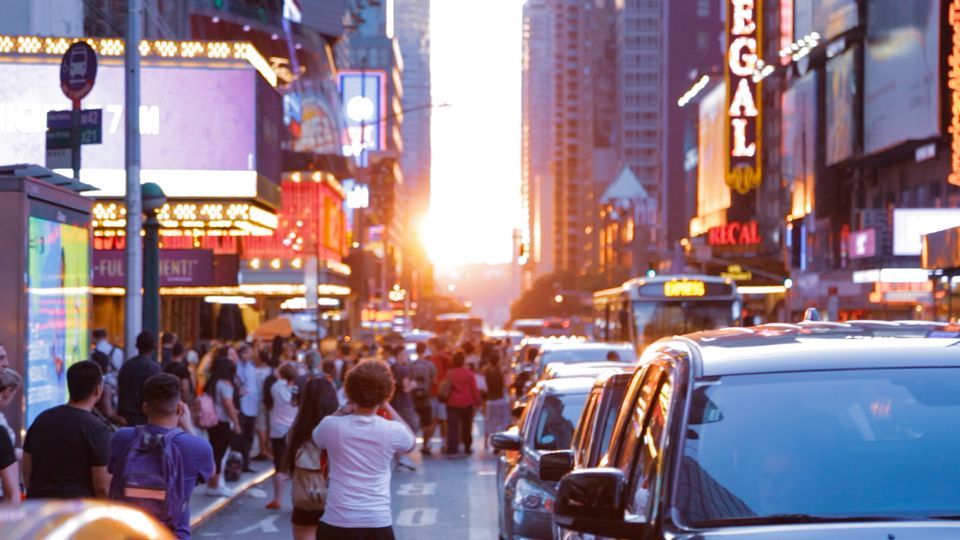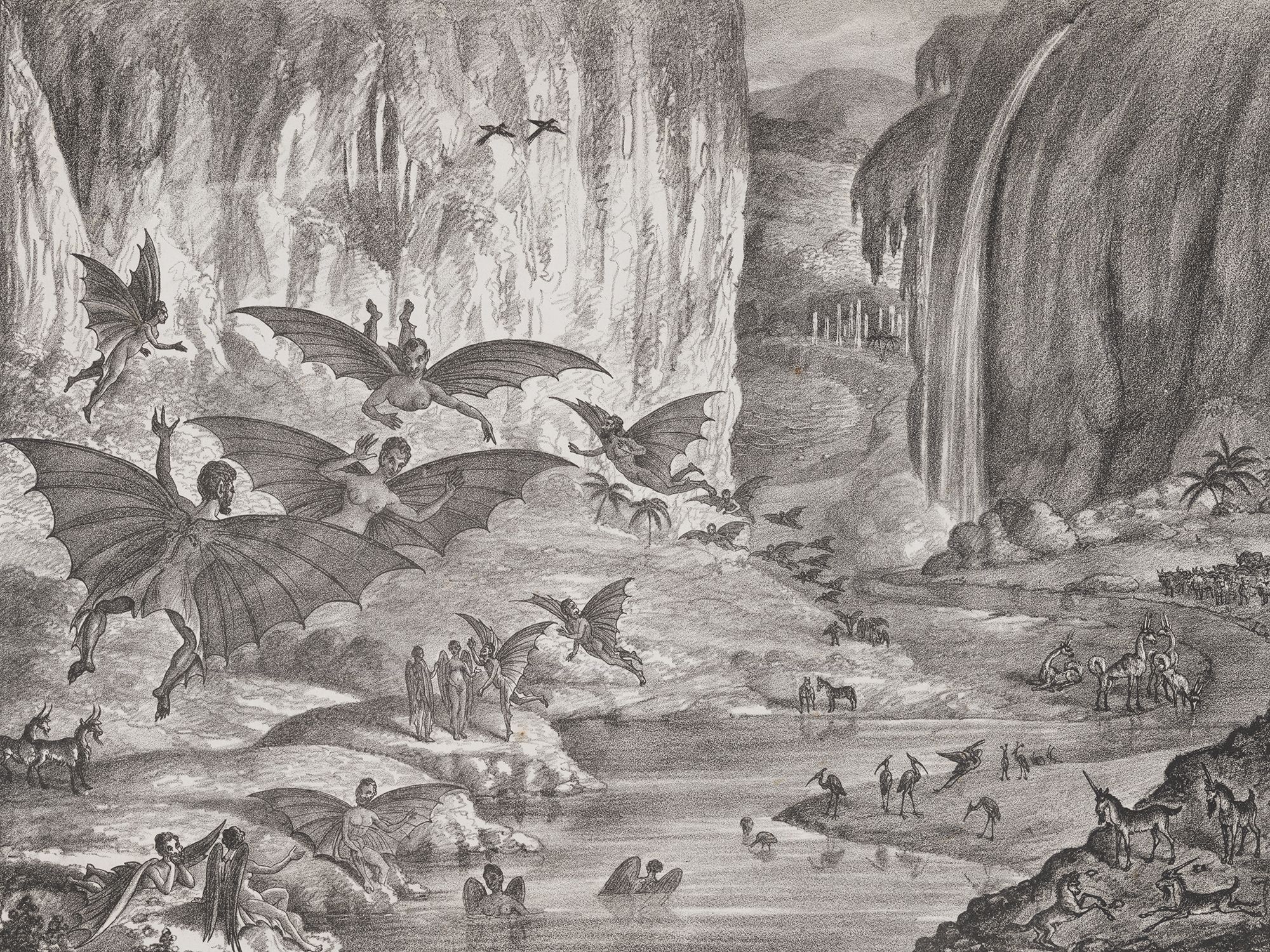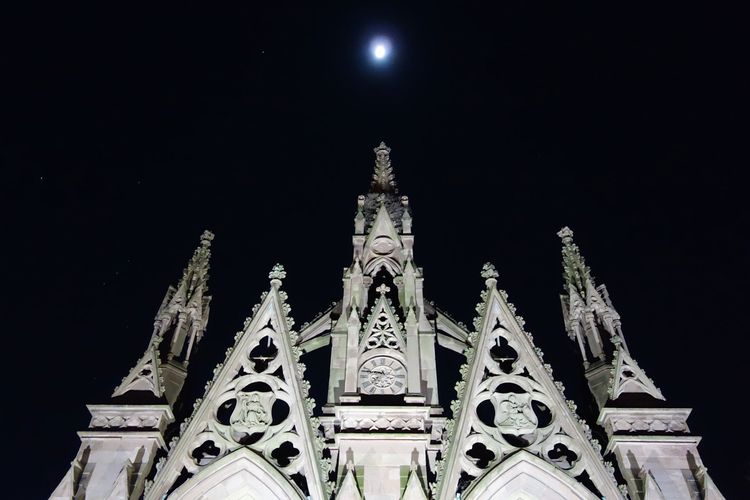The Sun Stops Traffic

For several days you have been noticing your late afternoon shadow. It haunts your heels when you squint to the west. It unfurls to herald your arrival as you stride to the east. It is unusually uninterrupted in its sprawl. Around you, Midtown’s blue-grey concrete complexion is uncharacteristically suffused with gold. A celestial body aligns with concrete and steel titans... Manhattanhenge approaches.
New Yorkers have little truck with the night sky. Only a handful of stars and planets peek through our clenched haze of midnight lights. Mostly, you forget that you are spinning around the Earth’s axis at 800 miles an hour, and adrift in the impossibly enormous universe. The Summer Triangle of Vega, Altair, and Deneb may float above as you navigate the hot July streets, but you are no stargazer. Not for you the timeworn constellations of giant swans and antiquated harps.
Lo, but on your way from happy hour to dinner reservation, you encounter the heavens. The sinking sun sets the street aflame. Its rays pin you to the center of the crosswalk and you are forced to acknowledge its majesty by lifting your phone and securing a record of this momentous occasion. You are not alone. Crowds have gathered, stoking the anger of crosstown car horns. Backseat passengers crane their necks behind to see what can be drawing this army of traffic-tangling spectators before them.
It is the alignment of the setting sun with the rectilinear grid of urban planning: twice a year, the sun momentarily alighting at the origin of a skyscraping ordinate and the horizon’s abscissa. The ancients erected their henges and pyramids and temple stones with astronomical purpose. Our city’s angles instead paid homage to riparian gods. Avenues paralleled the Hudson River’s deviation of about 29 degrees from true north, and the streets carved perpendicular paths out of the island’s hills.
So, stand in the flattened bottom of our urban canyons, and watch as the sun sweeps in from the south side and catches itself in the middle of the street, perfectly framed. Unstick yourself from the Earth and remember that you are standing on a sphere, aligned with a star, and floating in space. It will happen again next year, and the year after that, and the year after that, and the year after that for the rest of your life.

- Events like Manhattanhenge allow the human time scale to intersect with the stellar. To cast a glimpse backward along time’s arrow to our city’s geologic past, use the Ancient Earth tool. Find Queens smack dab in the midst of Pangaea, the Bronx welcoming the first land plants in the Silurian, and 500 million years ago, Staten Island on the sea floor, jawless fishes circling above.
- In 2017, the New York Post reported that Northern Boulevard in Queens, Atlantic Avenue in Brooklyn, and Hylan Boulevard in Staten Island are the city’s worst spots for road accidents blamed on sun glare. Stick to the subterranean subways.
- To safely stare at the sun, seek out the Amateur Astronomers Association at one of their many events around New York City. A kindly stargazer will point you towards sunspots larger than the Earth and magnificent solar prominences flaring off the edge of our flaming orb. We are heading into a period of increased solar activity, with the “solar maximum” predicted for 2025.




